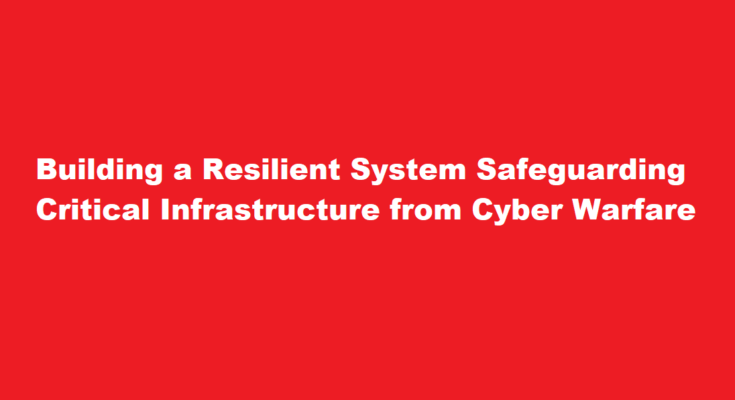Introduction
In an increasingly interconnected world, the threat of cyber warfare looms large, posing significant risks to critical infrastructure. The protection of essential services such as energy, transportation, healthcare, and communication systems is paramount. Developing a foolproof system to prevent cyber warfare and safeguard critical infrastructure demands a multi-faceted approach that combines robust cybersecurity measures, strategic planning, international cooperation, and ongoing innovation.
Understanding the Threat Landscape
The first step in creating an effective defense against cyber warfare is to comprehend the evolving threat landscape. Cyber-attacks can originate from nation-states, criminal organizations, or even lone hackers. These attacks target vulnerabilities in software, hardware, and human behavior. The potential consequences include disruption of essential services, economic loss, and compromised national security.
Robust Cybersecurity Measures
A foolproof system necessitates the implementation of stringent cybersecurity measures. This includes deploying advanced firewalls, intrusion detection systems, and encryption protocols. Regular security audits and vulnerability assessments can help identify and rectify weaknesses promptly. The principle of defense-in-depth should be applied, involving multiple layers of security to ensure that even if one layer is breached, others remain intact.
Strategic Planning and Regulation
Governments and regulatory bodies play a crucial role in developing a comprehensive system against cyber warfare. Enacting and enforcing cyber laws and regulations is vital to hold both state and non-state actors accountable. Organizations must adhere to cybersecurity standards and best practices. Public-private partnerships can facilitate information sharing and collaborative efforts to combat cyber threats.
International Cooperation
Cyber warfare is a global challenge that transcends borders. International cooperation is essential to prevent and mitigate its impact. Nations must work together to establish norms of behavior in cyberspace, delineate red lines, and create mechanisms for sharing threat intelligence. Treaties and agreements can serve as a framework for collective action against cyber aggression.
Capacity Building and Training
Developing a foolproof system requires a skilled workforce equipped to handle sophisticated cyber threats. Training programs and educational initiatives should be established to cultivate cyber expertise. This involves not only technical skills but also a deep understanding of the geopolitical and ethical dimensions of cyber warfare.
Innovation and Adaptation
The landscape of cyber warfare is ever-evolving, demanding constant innovation. Investing in research and development of cutting-edge cybersecurity technologies is paramount. Machine learning, artificial intelligence, and advanced analytics can enhance threat detection and response capabilities. Regular updates and patches must be applied to systems to counter new vulnerabilities.
Secure Supply Chain and Third-party Management
A chain is only as strong as its weakest link. Ensuring the security of the supply chain and managing third-party risks are integral components of a foolproof system. Suppliers and partners should adhere to the same stringent cybersecurity standards. Regular audits and due diligence can help identify and mitigate potential vulnerabilities.
FREQUENTLY ASKED QUESTIONS:
How can we protect critical information infrastructure?
Organizations can implement CIIP by conducting regular risk assessments, developing incident response plans, implementing appropriate security measures such as firewalls and access controls, and ensuring that all personnel are properly trained in security best practices.
Which equipment is used to protect an Organisation from cyber attacks?
An Intrusion Detection System (IDS) monitors network and system traffic for unusual or suspicious activity and notifies the administrator if a potential threat is detected.
Conclusion
Safeguarding critical infrastructure from cyber warfare demands unwavering commitment, cooperation, and innovation. A foolproof system is built upon robust cybersecurity measures, strategic planning, global collaboration, and the cultivation of cyber expertise. As technology advances and threats evolve, the defense against cyber-attacks must remain adaptable and proactive to ensure the continuity of essential services and the security of nations.
Read Also : Paving the Path to Global Prosperity Eradicating Poverty and Ensuring Equitable Access to Basic Necessities



